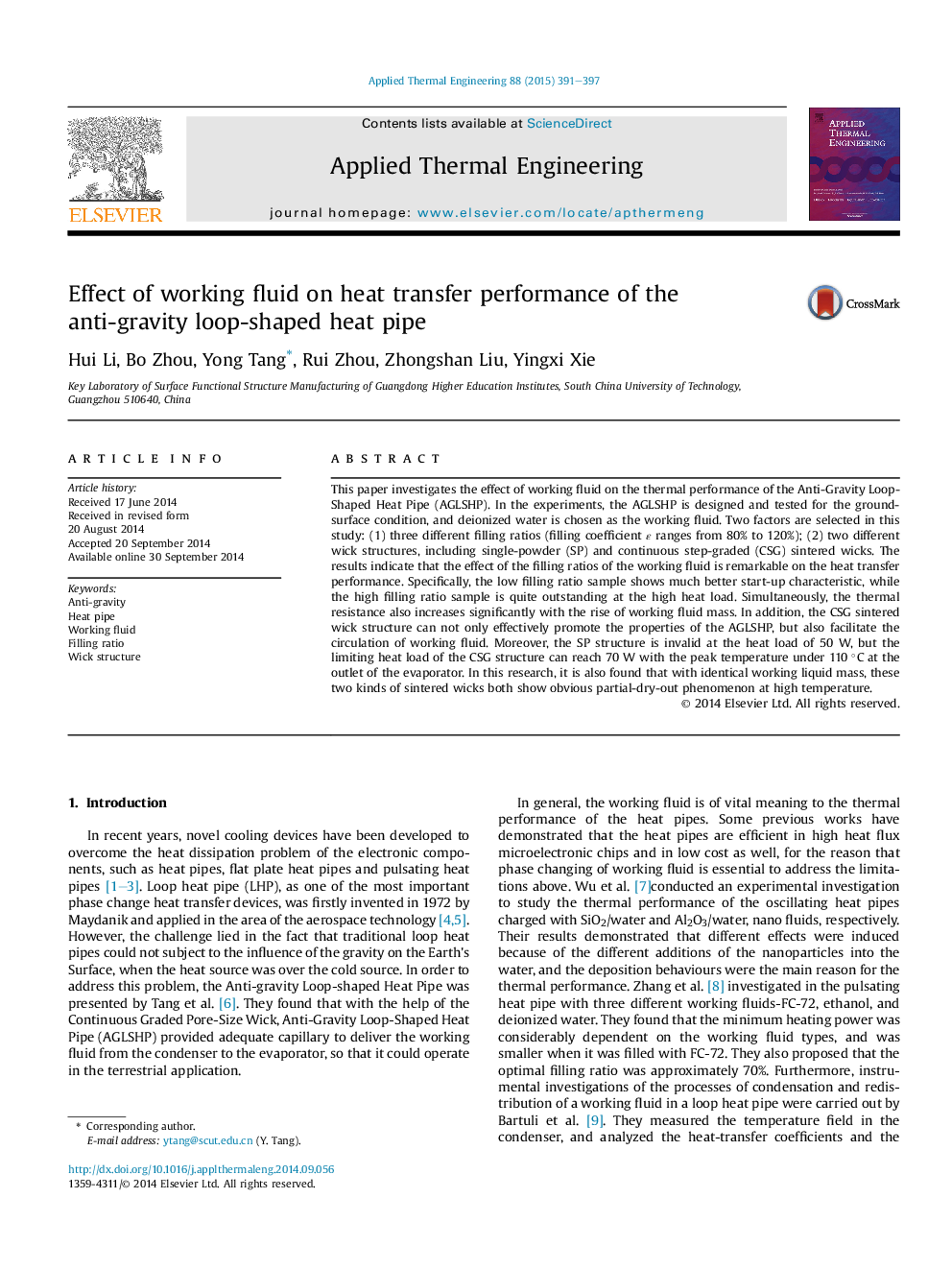| Article ID | Journal | Published Year | Pages | File Type |
|---|---|---|---|---|
| 645326 | Applied Thermal Engineering | 2015 | 7 Pages |
Abstract
This paper investigates the effect of working fluid on the thermal performance of the Anti-Gravity Loop-Shaped Heat Pipe (AGLSHP). In the experiments, the AGLSHP is designed and tested for the ground-surface condition, and deionized water is chosen as the working fluid. Two factors are selected in this study: (1) three different filling ratios (filling coefficient ε ranges from 80% to 120%); (2) two different wick structures, including single-powder (SP) and continuous step-graded (CSG) sintered wicks. The results indicate that the effect of the filling ratios of the working fluid is remarkable on the heat transfer performance. Specifically, the low filling ratio sample shows much better start-up characteristic, while the high filling ratio sample is quite outstanding at the high heat load. Simultaneously, the thermal resistance also increases significantly with the rise of working fluid mass. In addition, the CSG sintered wick structure can not only effectively promote the properties of the AGLSHP, but also facilitate the circulation of working fluid. Moreover, the SP structure is invalid at the heat load of 50 W, but the limiting heat load of the CSG structure can reach 70 W with the peak temperature under 110 °C at the outlet of the evaporator. In this research, it is also found that with identical working liquid mass, these two kinds of sintered wicks both show obvious partial-dry-out phenomenon at high temperature.
Related Topics
Physical Sciences and Engineering
Chemical Engineering
Fluid Flow and Transfer Processes
Authors
Hui Li, Bo Zhou, Yong Tang, Rui Zhou, Zhongshan Liu, Yingxi Xie,
